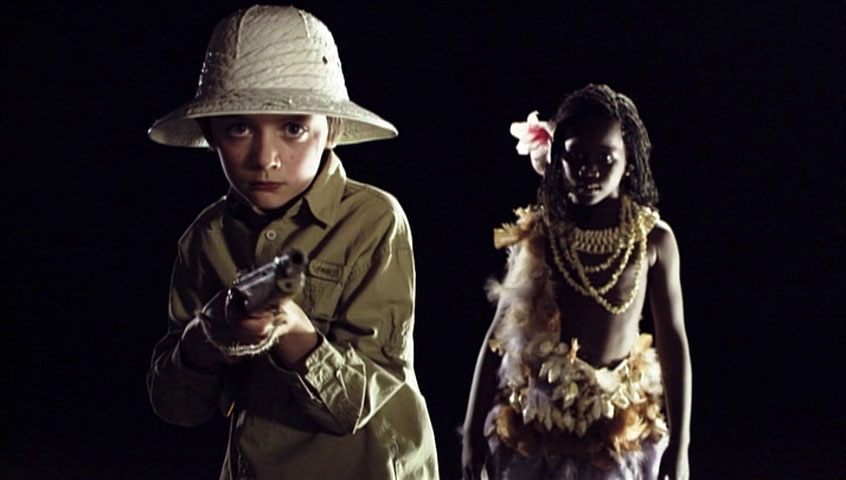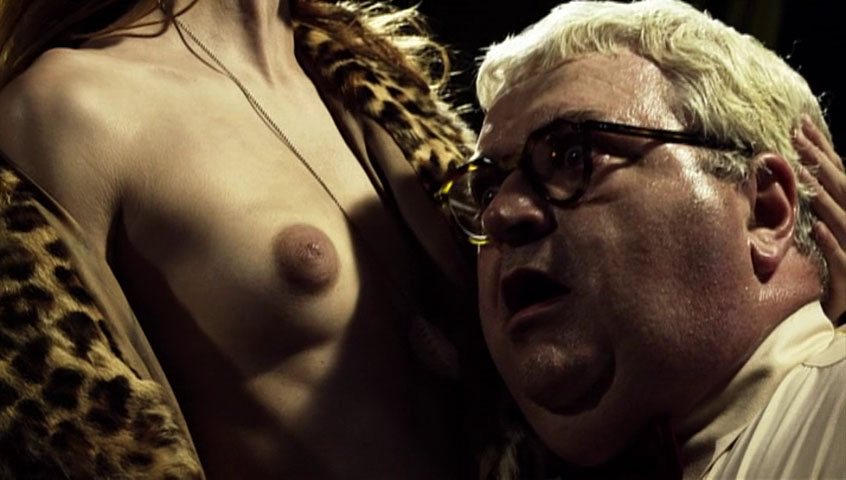Love’s Refrain (2016, Paul Clipson)
Measured zooms and pans through textures of nature, always overlapping and dissolving, set to an ambient groove with a steady beat. As the music gets blurrier and the beat recedes, the picture focuses more on streaks of light swishing past the natural photography, and finally the music turns into an insistent blare and the picture becomes abstract light squiggles. Clipson died last month, which is how I first heard about his work. My first thought is I’d like to see this in a theater, projected large, maybe in some kind of weekly screening program before a feature, and imagine how lovely that would be, and how nobody who sat through it would ever return.


–
Describe What You Heard (2017, Joe Callander & Jason Tippet)
“Tips on how to better describe your next mass shooting experience,” reacting to how people in news interviews are always saying “pop pop pop.” Jumps back and forth between shooting story footage and a guy providing a better sound effect vocabulary. This played True/False last year, now on vimeo.
–
Pure Flix and Chill: The David A.R. White Story (2018, Anthony Simon)
The week God’s Not Dead 3 came out I watched this half-hour doc on its star and studio founder, thanks to a Filmmaker article. Simon uses visuals from Pure Flix features and interview audio from White to craft a hilarious montage about the Christian entertainment industry and one of its biggest stars.
–
Idiot With a Tripod (2010, Jamie Stuart)
Jamie went out into a New York snowstorm, caught images of the city and edited them rhythmically to a Reznor/Ross song from the Social Network soundtrack. I watched this to see if I need to watch his feature A Motion Selfie, but I still don’t know!
–
Koko Trains ‘Em (1925, Dave Fleischer)
The earliest Fleischer I’ve seen, and it’s ambitious. An animator (Max) dressed in a suit is trying to impress a fashionable woman at his studio by drawing her dog, but the drawing keeps mutating into Koko the Clown. He puts Koko aside, they wrestle over the fountain pen, and the animator draws the dog next to Koko setting up a circus scenario. Not sure why the fashionable woman would want to see her dog break into pieces while doing flips and impersonate Teddy Roosevelt at the behest of a whip-wielding clown, but I never claimed to understand the 1920’s. Ends with Koko jumping out of the paper and riding the actual dog. Wikipedia says nearly 120 of these “inkwell” cartoons were made, that Dave’s job as a Coney Island clown inspired Koko, and that the dog named Fitz evolved into Betty Boop’s boyfriend Bimbo.

–
The Heat of a Thousand Suns (1965, Pierre Kast)
One of the few Chris Marker-related movies I hadn’t seen – he’s credited with editing. Sci-fi animation about a rich, bored space explorer with a robot crew who travels to a planet in another galaxy and fails to have a major romance with the beautiful girl he meets there since he does not understand how their relationships work. The animated movement is limited, but the drawings are lovely and unique. There’s a Jules & Jim reference, a cat, and a utopian society that is possibly into orgies.
It closes with a montage of real-life Earth women, including future Sans Soleil narrator Alexandra Stewart, who appeared in most of Kast’s films. This was his final short – he also directed features including an Easter Island sci-fi mystery, a Stéphane Audran cancer drama, and one in which scientist Jean Marais shrinks his female lab assistant to pocket-size. For Marker this was three years after La Jetée. Shot by Willy Kurant the year before he’d jump very impressively into feature films with Masculin Féminin, Trans-Europ-Express and Les Créatures. Played Locarno 1965 alongside The Koumiko Mystery.


–
La Legende dorée (2015, Olivier Smolders)
“God is a mediocre idea.” Librarian who hasn’t slept in 57 years claims his mother was conjoined twins, his dad a farting musician cannibal. He is fond of talking straight into the camera and showing off his scrapbook of tragic historical figures including a castrato, some torturous murderers, and Simon of the Desert – repeating and changing his story. Watched this to see if I want to see more Smolders, and… maybe?


–
Disintegration 93-96 (2017, Miko Revereza)
Either I am tired or the narrator has the kind of voice that it’s impossible to concentrate on – it’s something about this kid’s memories of hating his dad in 1993, his words illustrated with period VHS footage cropped to widescreen. Something about being illegal aliens in America, something about work and philosophy and class. If it was written, I’d have to reread some sentences, skim others, process it in my own time – but it’s spoken at a rapid, droning clip while I’m mostly trying to follow the visuals. Sponsored by Laika!

–
Muta (2011, Lucrecia Martel)
Someone’s been watching The Ring! Horror movie fashion models, faces unseen, creep around a yacht like an Under The Skin insect alien convention. I guess it’s an ad for a clothing company, like that Leos Carax short, but I appreciate these luxury brands giving great filmmakers a budget and letting them get deeply weird.

–
Things that aren’t shorts, but aren’t TV or movies exactly:
Hannah Gadsby’s Nanette is quite the journey… a middling comedy special for the first half, which turns into something more serious and interesting. Some early bits I’d noted as clunky and overserious turned out to be gradual setup for the later parts. I mean I hope it’s not the future of comedy, but as a singular show, it’s really well-constructed and I felt all the things.
I watched the whole Fred Armisen comedy thing about drummers, and I love both comedy and drumming, so I rather enjoyed it a lot.
And it seems like ages ago, but we saw Distant Sky, the second Nick Cave/Bad Seeds movie I’ve seen in theaters since moving here, and it was just as transcendent as the last one. Well-made concert movies can be better than actual concerts, and they’re easier to tour around the country, so why aren’t there more of them?














